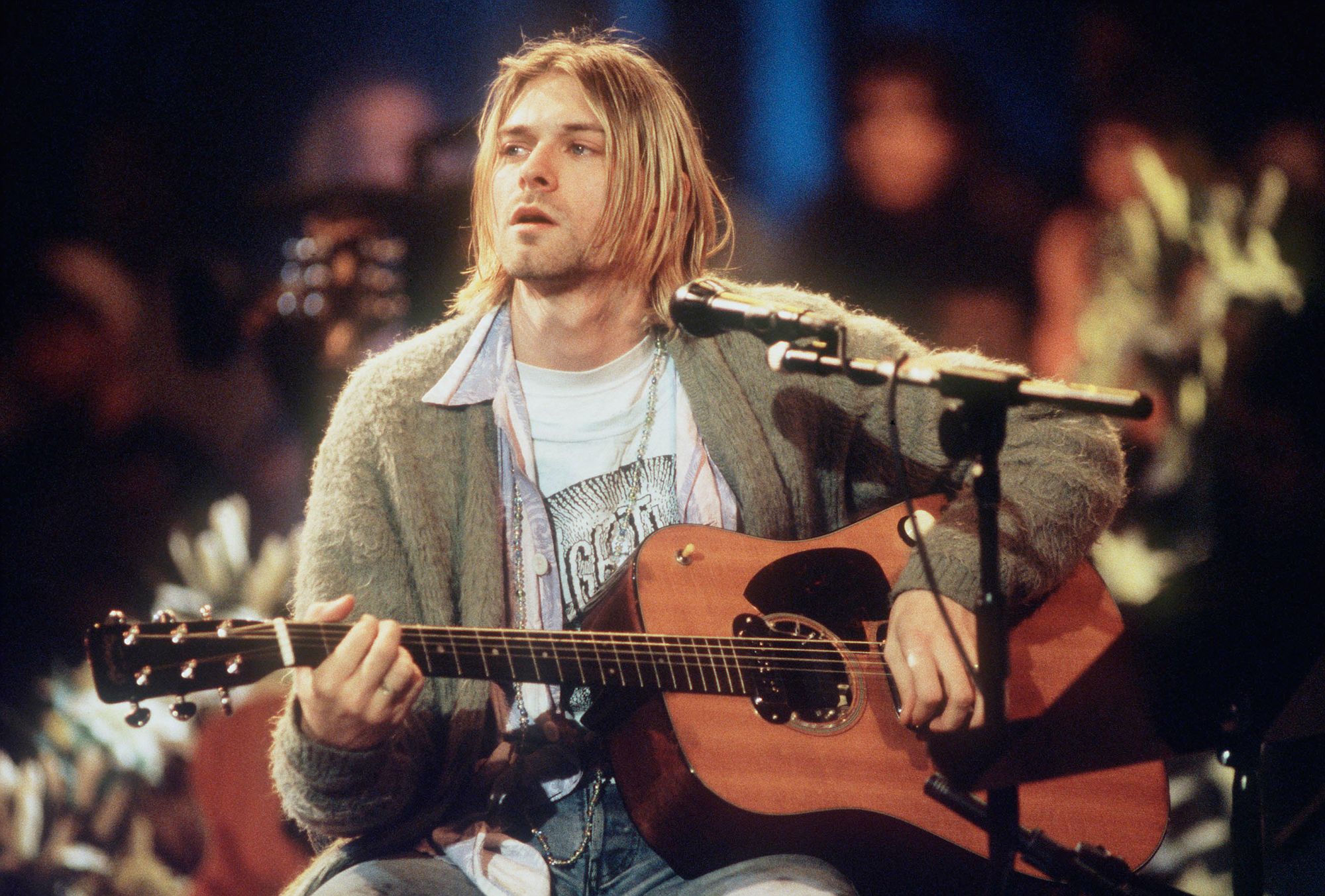Editor’s Note: Delving into the archives of pop culture history, “Remember When?” is a new series offering a nostalgic look at the celebrity outfits that defined their eras.
Remember when Nirvana frontman Kurt Cobain defined “grunge” without even trying?
Well now, his fuzzy olive-green cardigan, one of the look’s defining items, is going on sale. It could fetch up to $300,000 when it goes under the hammer this month.
The high sales estimate is somewhat surprising given the cardigan looks like it came straight out of a thrift store – as it did upon making its most famous appearance more than 25 years ago.
It was November 18, 1993, and Nirvana was in New York to tape what would become one of the most historic acoustic sets ever captured on film for “MTV Unplugged.” By that time, the American grunge band was on its way to becoming the biggest music act of the decade – though it sure did not look it.
Nirvana was formed in 1987 by Cobain and bassist Krist Novoselic, with drummer Dave Grohl, now of the Foo Fighters, joining in 1990. For most of their short career as a band, they wore distressed jeans and tattered sweaters, flannel shirts and Converse sneakers. Their scruffy style was the sartorial expression of the music they made: gritty, soulful and devoid of preppy-style conventions.
The MTV concert was no exception. Grohl wore a nerdy turtleneck and a ponytail, Novoselic a ratty t-shirt and a borrowed bass. But it was Cobain’s relaxed look and disheveled hair that most of us who were smelling like teen spirit back then still remember pretty vividly today.
Nirvana frontman Kurt Cobain
Cobain appeared in his now-famous cardigan, which he paired with a white tee and baggy jeans. It perfectly captured the artist’s anti-establishment – “I don’t give a s**it about what I am wearing” – attitude. More than any prior get-up, it made Cobain the poster boy of a generation who held
“Come as You Are” as their personal anthem – all the more so after he killed himself, less than five months later.
Cobain fit reluctantly into the role of “icon” – just as he never got quite used to Nirvana’s stratospheric success, particularly in the wake of their second album “Nevermind.” Released in September 1991, the record had sold over 1 million copies in the US by the end of that year. In 1992, it rose from No. 6 on the Billboard 200, replacing Michael Jackson’s Dangerous in the No. 1 slot. In total, the album has spent 435 weeks on the Billboard 200 – and it’s still there.
In a music landscape shaped by the ballads of Phil Collins, Michael Bolton and Simply Red, and the vocals of Whitney Houston and Mariah Carey, Nirvana’s ascent from unknown Pacific Northwest group to romanticized heroes of teen angst was indeed slightly unorthodox. Whether or not Cobain expected it, the band turned alternative into mainstream, underground into “overground” – and this extended beyond music.
Cobain’s ratty uniforms came to define the aesthetics of 1990s grunge, a fashion trend that designer Jean Paul Gaultier described in a 1993 Vogue interview as “nothing more than the way we dress when we have no money.” That rang especially true for the singer.
Having grown up in a blue-collar family in Aberdeen, Washington, Cobain had learned to layer up to keep warm and to wear things for as long as possible before replacing them – something that stayed with him through his brief adulthood. The cardigan, like many other of his clothes, was not part of a performative persona, but rather a necessity, chosen for no other reason than its practical use.

Yet, the counterculture vibe of Cobain’s wardrobe had a huge influence on fashion, both at the time and in more recent collections. Think about the ubiquity (and hipster comeback) of flannel lumberjack shirts, the oversized trend channeled by Marc Jacobs and Margiela, and the baggy knitwear we’ve seen time and again on the runways for the last five years. Raf Simons featured the deconstructed cardigan in his FW16 collection and this year Vetements’ FW 2019 collection includes a $1,150 version of the real thing – pricey, but nothing compared to the original, which sold for $140,800 the last time it went to auction in 2015.
The reason for Cobain’s enduring influence lies in what made him special in the first place: his ability to strip away the artifice and share something real. The subtlety of the MTV Unplugged performance proved that beautifully.
And, his thrift-store cardigan made it all the more memorable.














